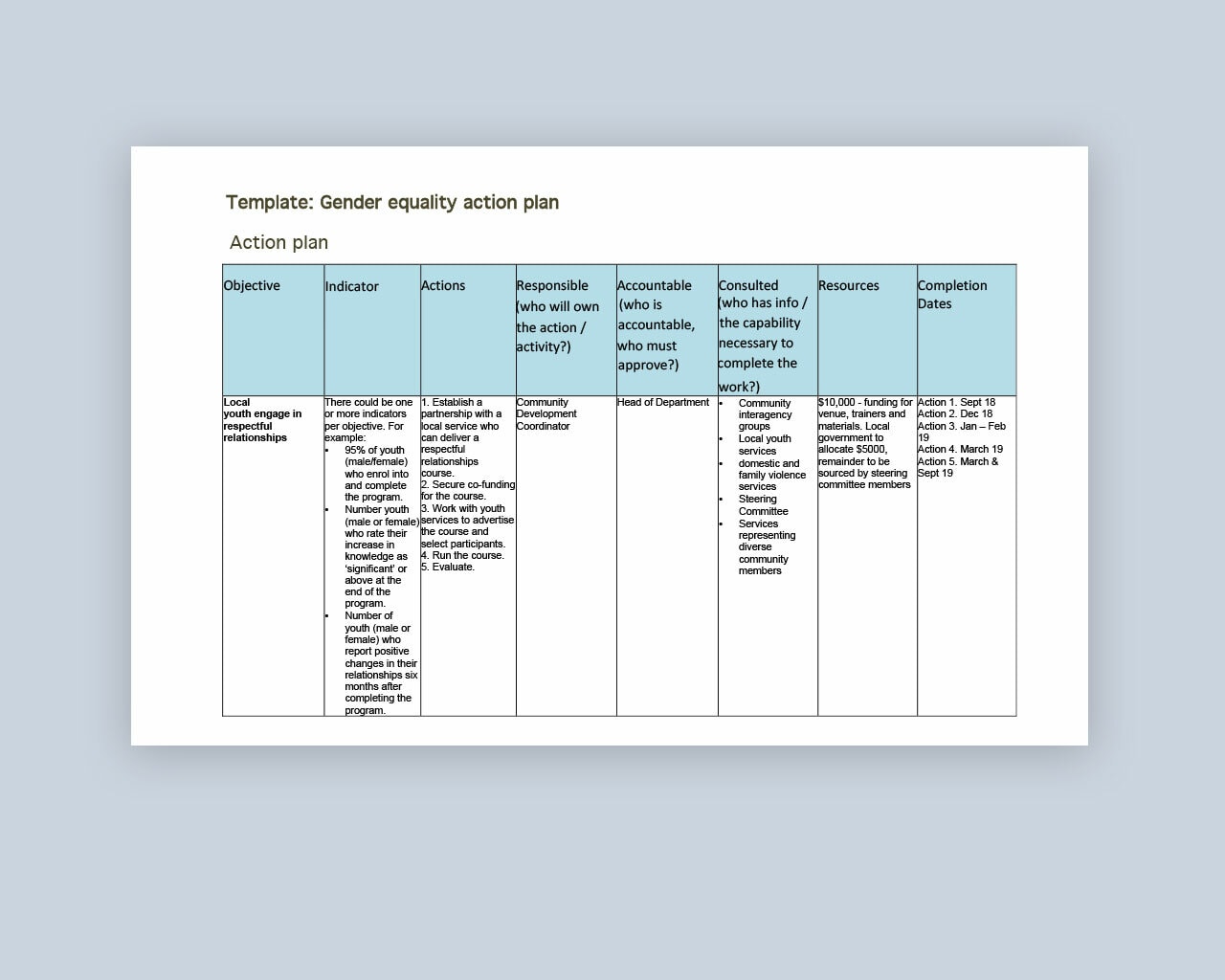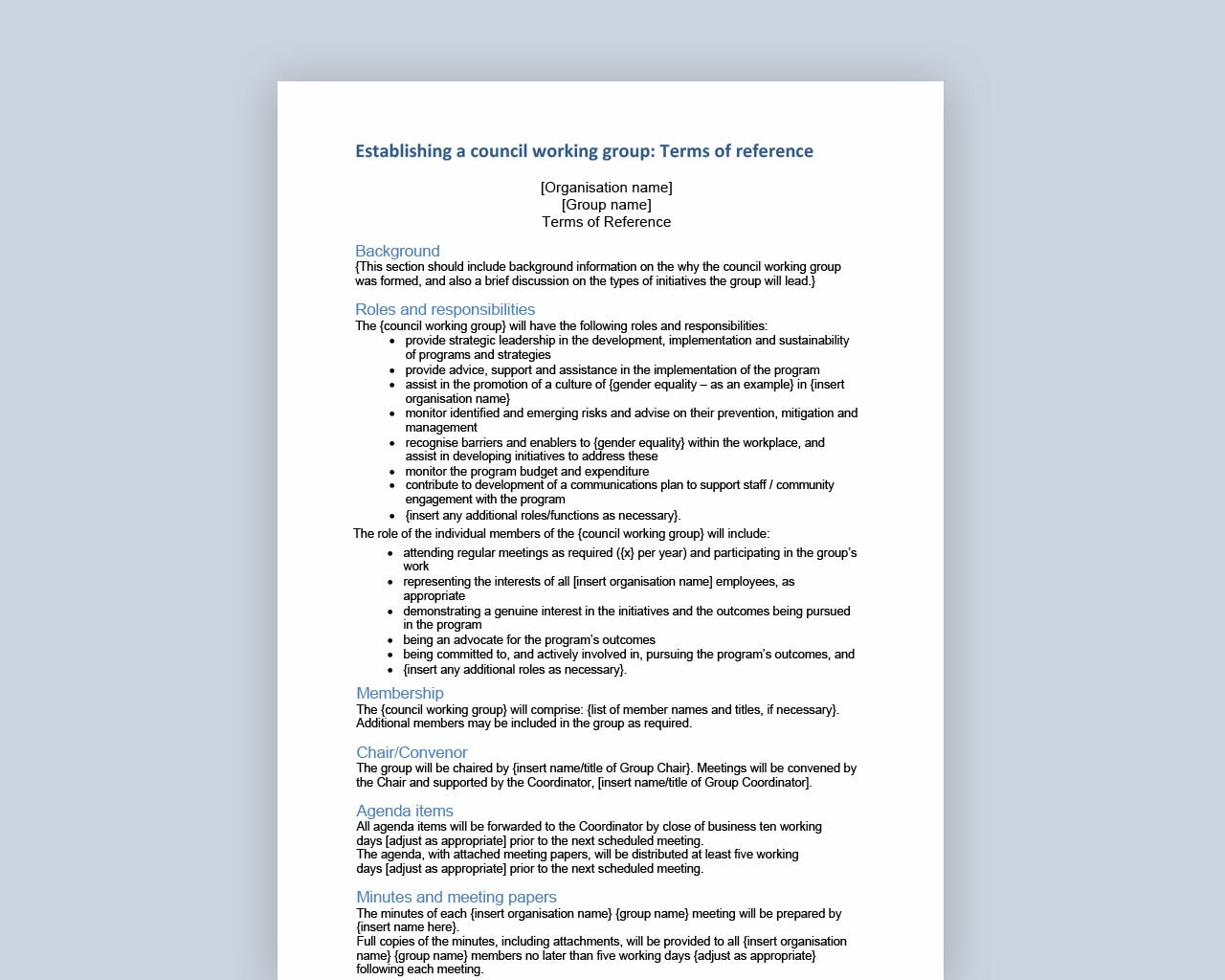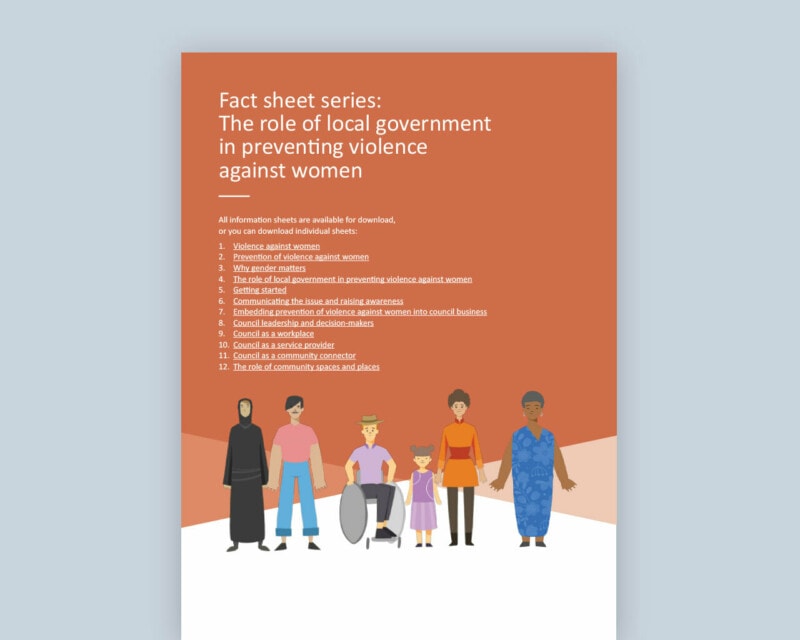On this page
Overwhelmingly, national and international research tells us that there are four key drivers of violence against women:
condoning of violence against women
men’s control of decision making and limits to women’s independence
rigid stereotypes about masculinity and femininity
disrespect towards women.
There is evidence that the workplace is an important setting where these drivers can be addressed.
Gender equity audits and action plans
A gender equity audit and action plan can help to systematically identify the current situation, what local government would like to change and how that change could happen.
Of course, your local government may want to start with a specific action rather than a thorough audit. For example, you could develop and implement a domestic and family violence policy for employees or review existing policies to promote gender equality.
We recommend that your local government’s Human Resources department is involved in any gender equity audit and action planning.
What is a 'gender equity audit' and a 'gender analysis'?
A gender equity audit is a tool used to collect data, measure change and provide an evidence-base on which to build a gender equality strategy for the workplace. Gender equity audits are also very useful to identify opportunities to address gender inequality in local government services, programs and planning for the community.
The local government can also start by selecting specific issues to address like the gender pay gap or implementing a domestic and family violence policy. The audit tool is a good option if a comprehensive approach is desired.
What is a 'gender equity action plan'?
A gender equity action plan is a simple way to set down objectives and actions flowing from audit findings. The action plan should identify the priority areas for change, the resources required, who is responsible and the timelines for change.
The process can be started with a review of local government’s key overarching strategy. See if there is an objective or an area within this strategy that the gender action plan can logically flow down from, such as a broader commitment to safer communities. This will help integrate gender equity practices into existing local government business and ensure that your local government will implement and report on progress against these actions.
Tailor the action plan to what your workplace is willing to accept and support. For example, many employees may have low awareness of gender equality and the role of local government in preventing violence against women. A communications campaign to raise awareness would be a good starting point, rather than writing a policy that few people will read or use, because it is poorly understood.

Gender equality action plan
Staff resourcing and communication
Once local government starts to implement a gender equity action plan it will be important to communicate the changes taking place. This could be facilitated by the Working Group. Examples of how this could be approached include:
creating opportunities for staff to contribute to policy development
identifying interested co-workers to be ‘change champions’ who can support implementation
circulating new/existing policies and offering presentations on what these policies include
providing access to relevant training and professional development
holding discussion groups to create a culture that normalises workplace conversations about gender equality
providing all resources to new (through induction) and existing staff on violence against women and gender equality workplace documents, including information for staff to respond to disclosures, backlash and understand the role of bystanders.

Template: Establishing a local government working group – Terms of reference example
Case study
City of Parramatta: Undertaking gender analysis with local government teams
The City of Parramatta conducted a gender equity audit to help them understand the gendered nature of the council’s services. The project officer worked with the team leaders and managers of two major council teams to explore the percentage of girls and women that were participating in their programs.
One of those teams was the Recreation and Facilities team who have been running a Girls in Sports program for six years to increase the participation of girls in their sports program. The team wanted to know the percentage of girls participating over the six years and the numbers and kinds of activities that were targeted at girls or boys.
The analysis showed that even though there were more young people participating over all, the percentage of girls participating had not increased. The project officer worked with the team to identify some future steps they could take to promote change, such as working towards challenging the stereotype that ‘girls don’t play sport.’ The team decided they could do this by utilising Council’s partnerships with professional sports teams to develop promotional videos and images of professional female sportspeople that they could use throughout their promotional material and social media channels.
They will also work with their coaches to make sports workshops inclusive of more girls and ensure that girls are actively participating (for example, ensuring the ball gets passed to them).
Related

Find factsheets, templates and other resources to support local government to promote gender equality and prevent violence against women.

12 resources in this collection
12 factsheets to support councils to prevent violence against women and promote gender equality.